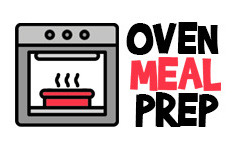Baking muffins, cakes, and cup cakes, silicone bakeware is convenient and easy to clean compared to aluminum, stainless steep or non-stick pans. Simply pour the mixture into the mold and pop it right out once it is done.
Since silicone is a type of rubber, there are unclear direction whether silicone is oven-safe or not.
Can you put silicone in the oven? Yes, you can put silicone in the oven. Even though it is rubber, it is food-graded material that does not cause any harmful chemical contamination to your food.
Silicone bakeware is typically made to withstand temperatures in the oven up to 500 degrees Fahrenheit or 260 degrees Celsius. Therefore, it can be placed directly put on the oven rack without concern.
The dangers of silicone bakeware are commonly questioned. There are lot of misinformation out there about the toxicity of silicone when used at high heat inside the oven.
Silicone cookware lasts long, has non-stick properties, stain proof, and safe for household appliances including fridge, freezer, microwave, and oven.
This article answers are queenly asked questions about safety guidelines for silicone and ways to identify whether the silicone is oven-safe or not.
Will silicone melt in oven?
No, silicone won’t melt in the oven because the melting point for silicone is around 500 degrees Fahrenheit or 260 degrees Celsius. Most baking recipes uses a temperature below 425 degrees Fahrenheit or 220 degrees Celsius, so there is no concern of the silicone overheating in an oven.
However, silicone cookware may melt when placed directly under the heating element or fire like on a stovetop.
Additionally, low-quality silicone is not suggested since it is made with filler materials. This result in distortion of shape, degrading the mold or melting into the food to create health hazard.
Prior to cooking or baking with silicone in the oven, inspect the material for visible flaws.
Do you put silicone bakeware directly on the oven rack?
Yes, you can put silicone bakeware directly on the oven rack. In fact, it has high heat resistant properties that does not require a pan underneath.
If you are frequently using silicone bakeware, know that it may wear and tear over time. Therefore, it is recommended to purchase from a trusted and reputable brand.
Always check for the quality and watch for the temperature. For better longevity, greasing helps to ease the baking process and always wash afterwards.
How do you know if silicone is oven safe?
Other than referring to manufacturer specifications, look for oven-safe symbol at the bottom of silicone bakeware. There are ways to identify oven-safe silicone based on temperature, design, durability, and functions.
- Temperature: Silicone cookware is rated safe for temperatures below freezing, and also up to 500 degree Fahrenheit or 260 degrees Celsius.
- Durability: Silicone baking sets are more durable than any other material. It is far more sturdy, and won’t shatter or rust just like glass or metal dishes. However, you must avoid using a knife on silicone pans as it can easily cut through.
- Design: Good quality silicone does not absorb any odor or discolor with frequent use.
- Color: When twisting the silicone, if there is any white color, this indicates that it is not pure silicone. As a result, it might be a blend of other materials that may affect the heat resistance.

Silicone in Oven: Conclusion
Because silicone is type of rubber, the question rises whether it is safe to use in the oven without risking health. The last thing you want is chemical cross contamination affecting your food and safety.
Silicone bakeware are food-grade and safe to use in freezer, fridge, and oven. The material is able to withstand heat up to 500 degrees Fahrenheit or 260 degrees Celsius without discoloring and misshaping.
Additionally, no other dish is needed and it is simply capable of placing directly on the oven rack.
The material has a high melting point and is not exceeded in most baking recipes. However, you cannot place near direct flame such as the heating element or broiler in the oven.
Look for quality silicone cookware to avoid from chemical leaching into your food. By observing maximum temperature, durability, design, and color, you may identify whether the silicone is oven-safe or harmful.
Baking or cooking on silicone cookware in an oven makes meal prep easier and convenient. Due to non-stick features, high heat resistance, durability, and easy to clean, there are many benefits to use silicone in everyday baking and cooking.
